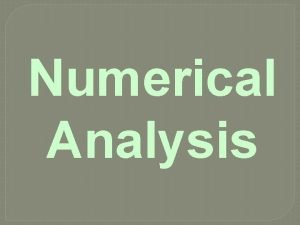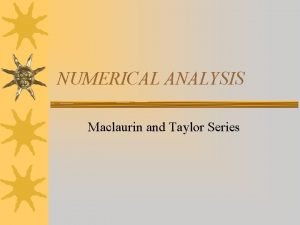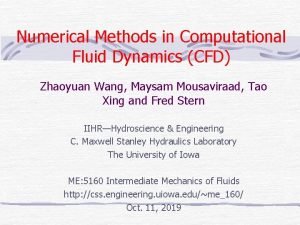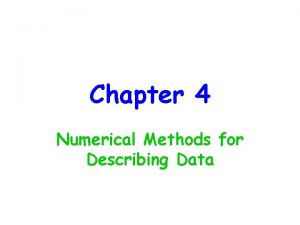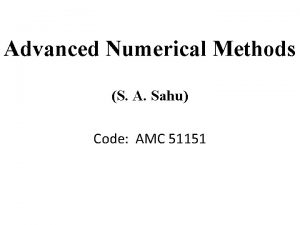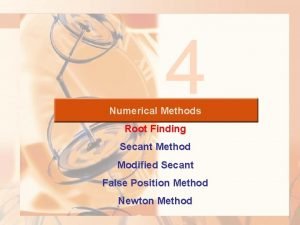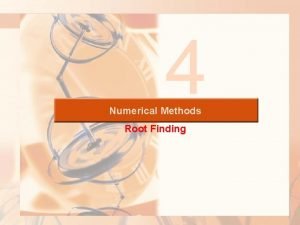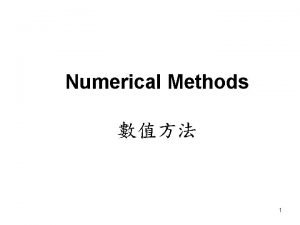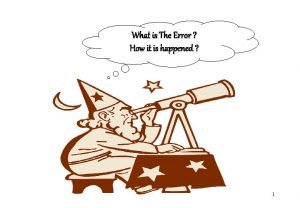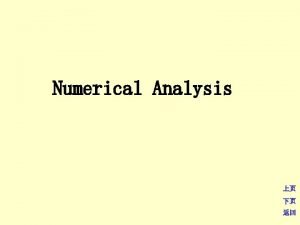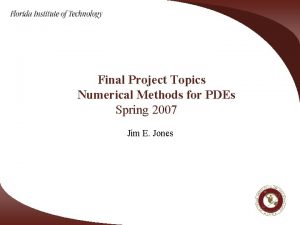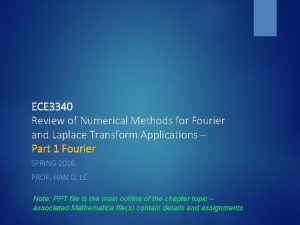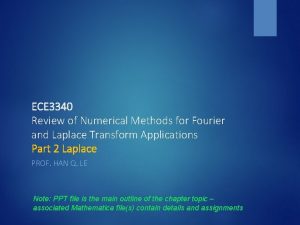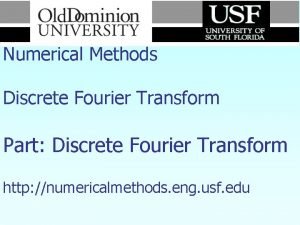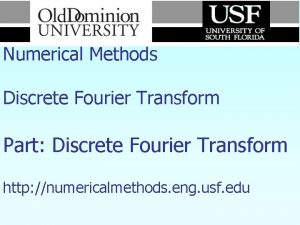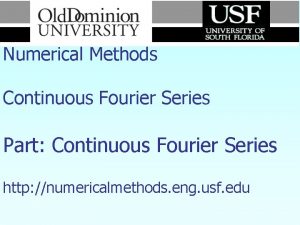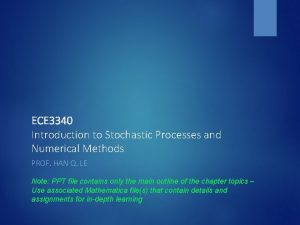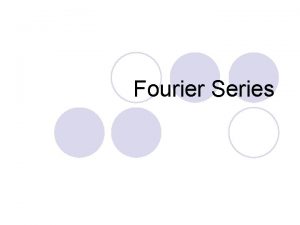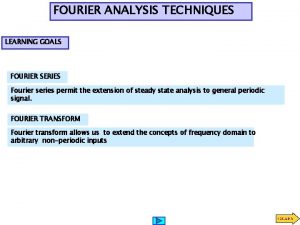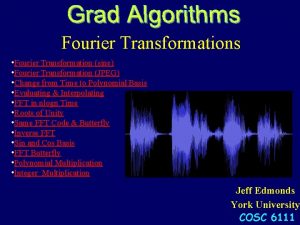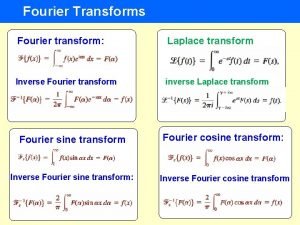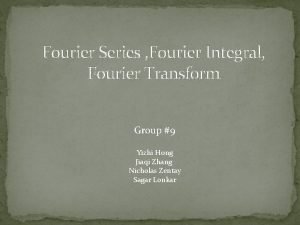ECE 3340 Review of Numerical Methods for Fourier















- Slides: 15

ECE 3340 Review of Numerical Methods for Fourier Transform Applications PROF. HAN Q. LE Segment 2 (cont. from Segment 1) Note: PPT file is the main outline of the chapter topic – associated Mathematica file(s) contain details and assignments

Outline 1. Introduction: concept of spectrum and periodic phenomena 2. Review of Fourier transform 3. Review of Fourier analysis 4. Numerical method: FFT 5. Applications in linear time-invariant system and signal processing

Overview (or the “big” perspective) We have learned Fourier transform, Laplace transform, and their applications in scientific/engineering problem – specifically for ECE, circuit and signal analysis. (Math 3321) Fourier transform is most applicable for harmonic, steady state phenomena (or when a starting time is not important). Laplace transform is most applicable when the initial condition is essential. In computation and digital applications, we use numerical methods such as FFT for Fourier analysis, or Z-transform for Laplace application to digital control of physical systems. Learning objectives: review and practice numerical computation of these methods with specific examples of circuits and signal processing.

Review: Fourier theorem and Fourier transform Note: this portion is in a Mathematica file


Introduction to Fourier analysis for linear time-invariant systems


Linear Time-Invariant (LTI) System Time domain Input Link to Mathematica file Control System Output Impulse function Arbitrary input LTI Impulse response function

in previous Segment, we discussed this: Conceptual relationship between spectrum and spectral response: • spectrum of a signal coming from a source • spectral response of an object given a stimulus now, we have a specific statement: The spectral response of a LTI is the spectrum of its output under an impulse input (Dirac delta-function input).

Linear Time-Invariant (LTI) System Frequency domain Input Control System Harmonic function Arbitrary input Output LTI Harmonic transfer function

Concept Review: Signal Processing All electronics around us involve signal processing. Signal represents information. That information can be something we generate. The APP is an example of sound signal. Other common types: texts, images, all sensors (as discussed previously) Electronics deal with signals: preprocessing, postacquisition, analog, digital.

Concept Review: Signal Processing (cont. ) Signal processing is a general concept, not a single specific operation. It includes: signal synthesis or signal acquisition signal conditioning (transforming): shaping, filtering, amplifying signal transmitting (telecomm) or applying for control (robotics) signal receiving and analysis: transforming the signal, converting into information, for implementing certain controls. Signal processing is mathematical operation; electronics are simply tools. Some computation are high-level signal processing: dealing directly with encode or embedded information rather than raw signal.

Concept review: numerical methods Signal and AC circuit problems Harmonic function Complex number &analysis Fourier transform Phasors • RLC or any time-varying linear circuits. Applicable to linear portion of circuits that include nonlinear elements • Signal processing • signal analysis (spectral decomposition) • filtering, conditioning (inc amplification) • synthesizing

Concept: analog processing vs. digital processing simplicity, capable of high speed and high frequency mid-range speed and frequency Signal input Microprocessor (DSP) Filtered signal output User input hard-wired/dedicated (use “recipes”) software-implemented direct compatibility with num. methods

To be continued
 Ece 3340
Ece 3340 Graphical and numerical methods
Graphical and numerical methods Definition of numerical methods
Definition of numerical methods Taylor series numerical methods
Taylor series numerical methods Different types of errors in numerical methods
Different types of errors in numerical methods Backward euler scheme
Backward euler scheme What are numerical method in cfd
What are numerical method in cfd Chronicle of higher education
Chronicle of higher education Numerical methods of descriptive statistics
Numerical methods of descriptive statistics Stirling's formula for numerical differentiation
Stirling's formula for numerical differentiation Secant method
Secant method Birge vieta method examples
Birge vieta method examples Numerical methods
Numerical methods Error aleatorio formula
Error aleatorio formula Interpolation in numerical methods
Interpolation in numerical methods Pde project topics
Pde project topics


